
A steamboat is a boat that is propelled primarily by steam power, typically driving propellers or paddlewheels. Steamboats sometimes use the prefix designation SS, S.S. or S/S or PS ; however, these designations are most often used for steamships.
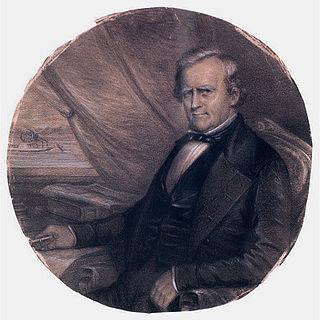
Henry Miller Shreve was an American inventor and steamboat captain who removed obstructions to navigation of the Mississippi, Ohio and Red rivers. Shreveport, Louisiana, was named in his honor.

Sultana was a commercial side-wheel steamboat which exploded and sank on the Mississippi River on April 27, 1865, killing 1,167 people in what remains the worst maritime disaster in United States history.
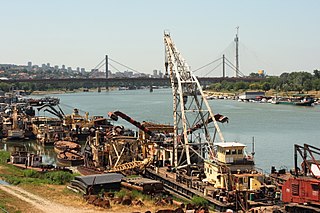
A riverboat is a watercraft designed for inland navigation on lakes, rivers, and artificial waterways. They are generally equipped and outfitted as work boats in one of the carrying trades, for freight or people transport, including luxury units constructed for entertainment enterprises, such as lake or harbour tour boats. As larger water craft, virtually all riverboats are especially designed and constructed, or alternatively, constructed with special-purpose features that optimize them as riverine or lake service craft, for instance, dredgers, survey boats, fisheries management craft, fireboats and law enforcement patrol craft.

The Delta Queen is an American sternwheel steamboat. She is known for cruising the major rivers that constitute the tributaries of the Mississippi River, particularly in the American South, although she began service in California on the Sacramento River delta for which she gets her name. She was docked in Chattanooga, Tennessee and served as a floating hotel until purchased by the newly formed Delta Queen Steamboat Company. She was towed to Houma, Louisiana, in March 2015 for refurbishing to her original condition.

The Steamboat Inspection Service was a United States agency created in 1871 to safeguard lives and property at sea. It merged with the Bureau of Navigation in 1932 to form the Bureau of Navigation and Steamboat Inspection, which in 1936 was reorganized into the Bureau of Marine Inspection and Navigation. The Bureau of Marine Inspection and Navigation's responsibilities were transferred temporarily to the United States Coast Guard in 1942. The Bureau was abolished in 1946, when its functions were transferred permanently to the Coast Guard.
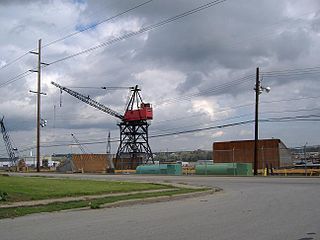
Jeffboat was a shipyard in Jeffersonville, Indiana founded by James Howard in 1834, a builder of steamboats. The company was owned by the Howard family until it was sold leading up to World War II. Following the war, it became known as the Jeffersonville Boat and Machine Company and later changed its name to Jeffboat, the more commonly used short form of its name. The company was the largest inland shipbuilder in the United States and the second-largest builder of barges before it closed in 2018.
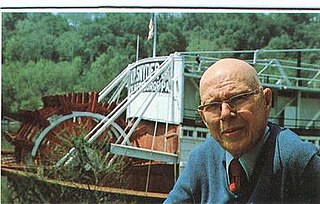
Fredrick Way Jr. was the youngest steamboat captain on the Ohio River and Mississippi River. He was the author of books on the boats that ply the inland waterways. He supervised the flat-bottom, stern paddlewheeler, the Delta Queen, from San Francisco, down the Pacific coast, through the Panama Canal, across the Gulf of Mexico and up the Mississippi and Ohio rivers to Pittsburgh in 1946.

Natchez has been the name of several steamboats, and four naval vessels, each named after the city of Natchez, Mississippi or the Natchez people. The current one has been in operation since 1975. The previous Natchez were all operated in the nineteenth century, most by Captain Thomas P. Leathers. Each of the steamboats since Leathers' first had as its ensign a cotton bale between its stacks.
The Saluda was a paddle steamer that operated on the Missouri River in the early 1850s. The ship exploded near Lexington, Missouri in 1852, killing over 100 people, making it one of the worst disasters in Missouri River history.

Steamboats on the Columbia River system were wrecked for many reasons, including striking rocks or logs ("snags"), fire, boiler explosion, or puncture or crushing by ice. Sometimes boats could be salvaged, and sometimes not.

New Orleans was the first steamboat on the western waters of the United States. Her 1811–1812 voyage from Pittsburgh, Pennsylvania, to New Orleans, Louisiana, on the Ohio and Mississippi rivers ushered in the era of commercial steamboat navigation on the western and mid-western continental rivers.
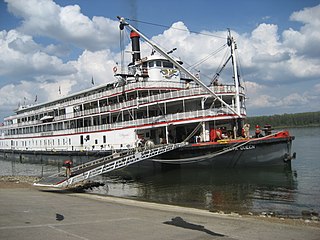
Steamboats played a major role in the 19th-century development of the Mississippi River and its tributaries, allowing practical large-scale transport of passengers and freight both up- and down-river. Using steam power, riverboats were developed during that time which could navigate in shallow waters as well as upriver against strong currents. After the development of railroads, passenger traffic gradually switched to this faster form of transportation, but steamboats continued to serve Mississippi River commerce into the early 20th century. A small number of steamboats are still used for tourist excursions in the 21st century.

The Lucy Walker steamboat disaster was an 1844 steamboat accident caused by the explosion of the boilers of the steamboat Lucy Walker near New Albany, Indiana, on the Ohio River. The explosion occurred on the afternoon of Wednesday, October 23, 1844, when the steamer's three boilers exploded, set the vessel on fire, and sank it. It was one of a number of similar accidents of early 19th-century riverine transportation that led to important federal legislation and safety regulations. The vessel's owner was a Native American; her crew were African-American slaves, and her passengers represented a cross-section of frontier travelers.
Gordon C. Greene was a paddle steamer, launched in 1923, that operated under several names before sinking in St. Louis in 1967.

The Island Queen was a series of two American sidewheeler steamboats built in 1896 and 1925 respectively. Both vessels were passenger carriers cruising along the Mississippi and Ohio rivers as both an excursion boat and tramp steamer. The first Island Queen burned in 1922 in a fire which destroyed several other vessels. The second Island Queen was destroyed in 1947 when her chief engineer, using a welding torch, accidentally cut into her fuel tank. Island Queen was reduced to her steel frame, and was scrapped by a local company.

The Louisiana was a Mississippi River steamboat that exploded on November 15, 1849, killing at least 150 and possibly as many as 200 people, and grievously wounding scores of others. All of the boilers exploded simultaneously about five minutes after she pulled away from the dock at Gravier Street in New Orleans; the entire boat sank 10 minutes after the explosion. Several of the dead were on the steamer Storm, which was docked adjacent to the Louisiana.

The Anglo-Norman was a Mississippi River steamboat. The brand-new boat departed New Orleans on December 14, 1850, on a demonstration cruise but after a couple of hours on the water, as she turned around to head back to port, all her boilers exploded simultaneously. At least 100 people were killed. A newspaper writer who survived the explosion published an article about his experience entitled "The Experience of a Blown-up Man."
The SS Helen McGregor was an American steamboat. Her boilers exploded on February 24, 1830, in Memphis, Tennessee. The reported death toll ranged from 30 or 40 to 60. She had been docked at a wharf to pick up and discharge passengers; several of those killed were on the dock. More the 270 people had died various in steamship boiler explosions beginning in 1825; after the Helen McGregor the United States Congress asked "the secretary of the Treasury to investigate the boiler accidents."

Lloyd's Steamboat Directory, and Disasters on the Western Waters is a book published in 1856 listing steamboat businesses in the United States, along with an illustrated catalog of American maritime disasters. It covers "mainly river material, with a substantial scattering of lake items."

















